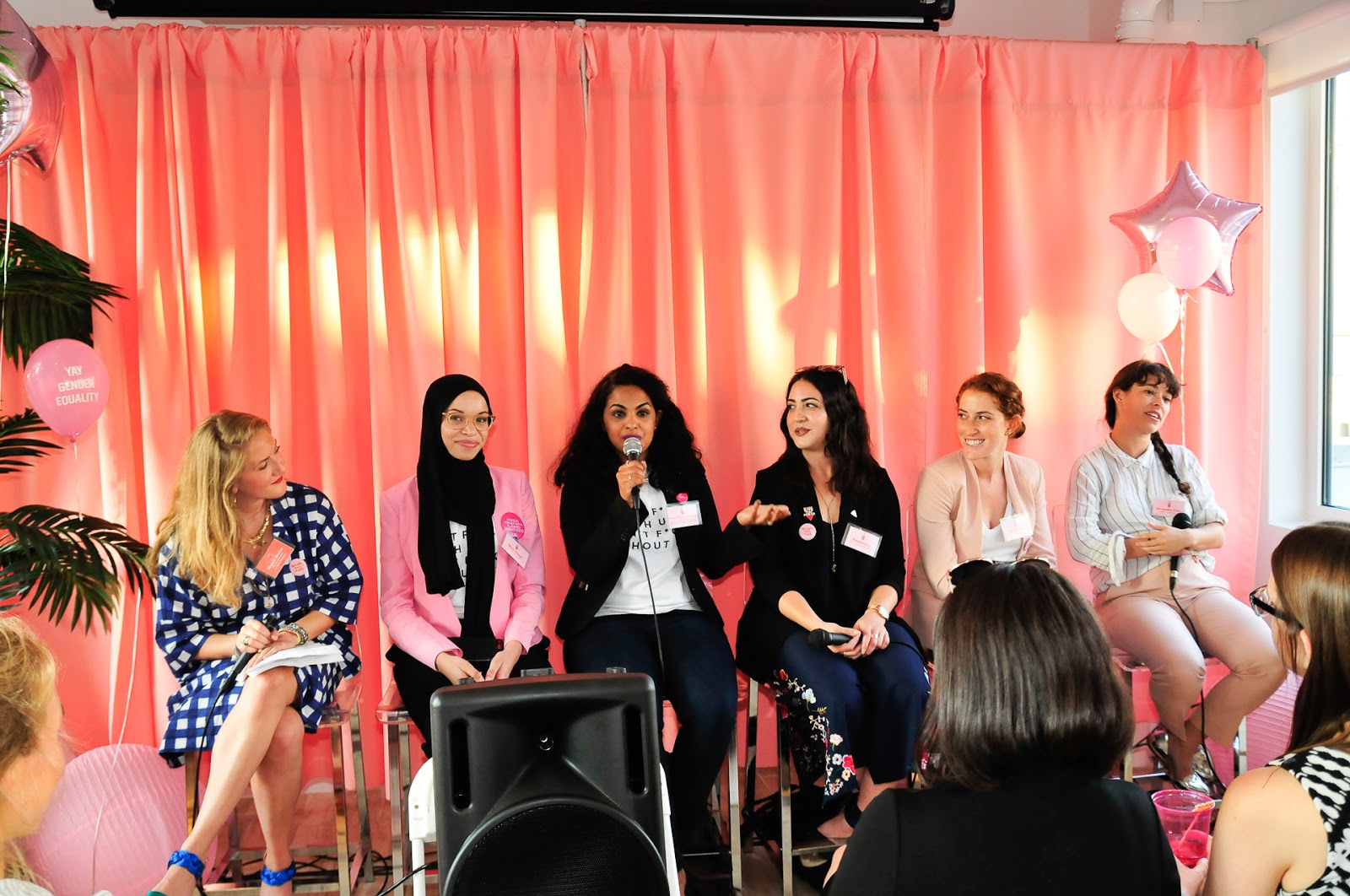Why Digital Brands Need Physical Retail: an Evening with Bulletin's Co-Founder and COO
 Last month, we brought our Workroom event to NYC and LA. There we met Shopify store owners and helped them prep for Black Friday Cyber Monday via a week of one-on-one appointments and presentations by industry experts.
Last month, we brought our Workroom event to NYC and LA. There we met Shopify store owners and helped them prep for Black Friday Cyber Monday via a week of one-on-one appointments and presentations by industry experts.
Workroom was the latest in our efforts to get face time with you. We’ll continue to do so, city by city, through events like Workroom and meetups hosted by our partners. Why?
We know that there’s tremendous value in IRL interactions.
Ali Kriegsman agrees. She’s the Co-Founder and COO of Bulletin, a company with a mission to make retail space accessible and affordable for brands. In a city like NYC with sky-high multiple-year leases, Bulletin offers shelf space to small brands for a monthly membership fee.

Ali spoke at our NYC Workroom event, delivering her presentation Why Digital Brands Need Physical Retail Space. If you missed her talk, or you live elsewhere in the world, here’s what we learned:
Is retail dead?
“The retail apocalypse” is upon us, says Ali, and she has the numbers to prove it. Major U.S. and global brands are shuttering physical stores at epidemic rates. J.C. Penney announced the closure of 138 stores in 2017, and Gap has plans to close 200 of its own.
“Retailers reported almost 60,000,000 square feet of enclosures, for just the first half of 2016. Last year, based on data from JLL, almost 2,000 stores closed down. In 2017, that number has spiked to 6,400 brick and mortar spaces across the United States. And if you're curious how much vacant retail space there is, there are over half a million empty storefronts in the U.S. right now.”
There are over half a million empty storefronts in the U.S. right now.
In NYC, Ali cites the “ecommerce glow-up”, shifts in consumer shopping preferences and expectations, and “delusional property owners” as some of the reasons for the slow death of retail. Many chains, too, are not adapting to the changes fast enough to compete, she says.
“When you go into a store like Sears or Macy's, your brain isn't being rewarded. You're walking through these stores, they're dilapidated in a lot of cases, they're carpeted in a lot of places, and just not really tailored to the way that your brain has been tricked to function by modern technology.”
Lastly, she blames “Netflix and Chill” culture.
“We're lazy. With Netflix, Amazon, HBO Go, these beautiful e-commerce sites, Amazon, it's so easy to literally sit at home, go nowhere, and do everything you need to do from your devices.”
Once thriving stretches of retail may be looking a little like scenes from The Walking Dead, but we shouldn’t mourn: retail offers a tactile experience that can never be replicated online.
So, despite the bleak data, she says, retail is in fact not dead. “It’s just different.”

The case for IRL: why digital brands should sell offline
“What do you offer that can't be sold on Amazon?” asks Ali. While ecommerce wins on convenience, filtered search, and scope, it will never beat retail in the following areas, she says: intimacy, discovery, customer engagement, and experience.
Intimacy
Even as the internet advances, it's not the same as selling your products in store and having people actually touch and feel your product.
Discovery
Discovery happens more organically in retail, because customers are faced with all of the choices—there’s no filtered search. In this way, you can access new audiences of people who weren’t specifically looking for your product, especially in the case of markets, and co-retail spaces where discovery is the aim.

Customer engagement
Customer feedback is incredibly important as you grow your brand—beyond reporting or surveys, you can glean much more information by simply watching your customers. What are they drawn to? Why do (or don’t) they decide to buy? Who are they buying it for? Conversations can help inform business decisions, develop new products, and discover new audiences.
You can better understand how they think and feel about your product.
Experience
Experiences cover everything from bra-fittings to full events within a space—anything that allows a customer to interact with your brand, employees, and products beyond the transaction. For a lifestyle or influencer brand, the experience is almost as important as the product itself.

If you feel your brand has personality, a story to tell, if there's a certain cultural element to your brand, you need to provide experience in physical space.
Though Instagram has contributed to the shift in how we shop, via hyper-curated feeds of things we like, it’s also an argument for Instagrammable physical experiences.
“Millennials are expecting something more than just fresh product. They're expecting something more than a nice store. They want an atmosphere, they want an experience, they want something they can Instagram, they want something that they can tell their friends about.”
They want something they can Instagram, they want something that they can tell their friends about.
Where to sell your products IRL
Bulletin’s two NYC boutiques focus on curated customer experiences, and they open the spaces to community events. If you’re a local brand, you can apply to sell your products in one of Bulletin’s locations.
If you’re not in New York or your products aren’t a fit for the Bulletin themes, there are plenty of other ways to take your brand offline without signing a 10-year commercial lease:
Co-retail
“Co-retail” refers to established retail companies like Bulletin that provide shared space to multiple brands. It’s a more intimate and hands-on process than straight consignment or wholesale. In many cases, as a brand, you can design your own displays, set pricing, and educate staff. At Bulletin, member brands have access to after-hours space for events and parties.
“Artists & Fleas, Wolf and Badger if you're a fashion designer, or the Good Goods Market by Young & Able. A lot of these places do take global calls for product, and they'll have a section of the co-retailing space that is manned by someone on their team, so that you don't have to physically be there.”
Local fairs and markets
 Markets and fairs are not only great spaces to connect with customers, but they can be beneficial for networking, too. Connect with complementary brands who may be potential partners for temporary or pop-up opportunities in the future. Niche markets (like say, a food show) can help smaller brands pool similar audiences.
Markets and fairs are not only great spaces to connect with customers, but they can be beneficial for networking, too. Connect with complementary brands who may be potential partners for temporary or pop-up opportunities in the future. Niche markets (like say, a food show) can help smaller brands pool similar audiences.
"Keep tabs on local markets. We have merchants that worked with us two years ago when we were doing pop-up markets who still reach out and are like, ‘Are you doing a pop-up market?’ Keep a list of people that you know are hosting those temporary retail activations so you always get alerted if those opportunities arise.”
Keep a list of people that you know are hosting those temporary retail activations so you always get alerted if those opportunities arise.
Temporary retail and pop-ups
Because of their versatility and portability, the possibilities of pop-ups are endless. They’re a great way to level up from a table at a market to a dedicated (albeit temporary) retail space.
Check local retail shops to see if they offer space for brands to pop-up in store, partner with other brands to share costs, or open up your office, studio, or production space to invite customers in to peek behind the curtain. Many businesses have sprung up to address the pop-up trend, says Ali:
“Solutions like Storefront, Appear Here, Peerspace—they make it so that you can take over a space for a very short period of time.”
Consignment and wholesale
Though the least hands-on of the bunch, consignment and wholesale get your products into a physical space, even if you’re not there to sell them. Sales data and conversations with the retailer can still help inform you about how your products perform offline.
“I also definitely think just starting off slowly with consignment and wholesale, even though it's unwieldy in a lot of cases and isn't the most seamless or friendly process on either end, is definitely a good way to start.”


Don’t forget about your bread and butter (your ecommerce store may be still be your primary sales channel) but a multichannel approach that includes physical retail can help you access new audiences, tell your brand story, and get direct feedback from customers.